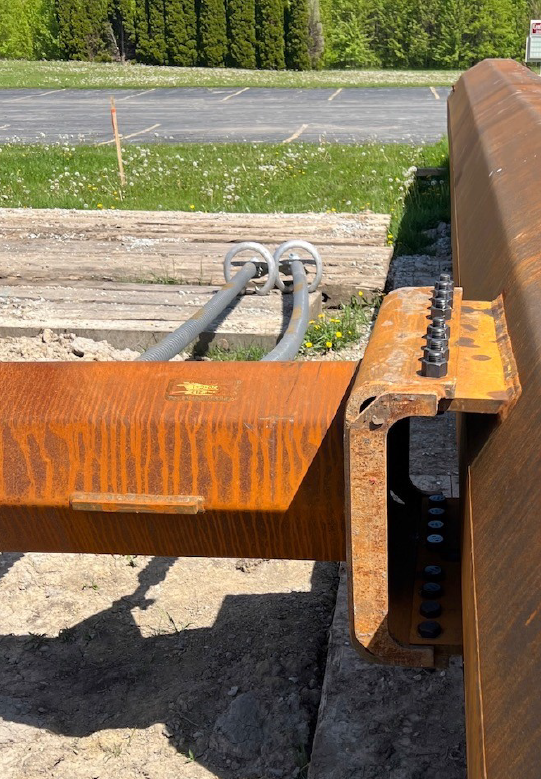CASE 1: Conductor damaged during installation:
2x1033.5 kcmil, 54/7, ACSS MA2 Curlew, 35,000Lbs RBS
New 20miles, 345kV Tline, 2050 MVA, 140Ft ROW, IN
Solution:
1.)Armor Rods=No
2.)Sleeve repair=Yes, but not immediately available during construction
3.)Splice=Yes, available. Installed.
Result:
CASE 2: Arm deflection:
Issue: The 345kV arm installed on ground didn't show a 2deg. rise design deflection, it was 2" less than designed.
After the review with the manufacturer it was clear 1.) The arm was not manufactured following the design or 2.) Installation was not done properly. It, most probably, was 1.
Solution: After the analysis with the manufacturer it was shown that the missing deflection would Not affect the structure capability itself. The installed arm downward deflection was Not noticeable.
CASE 3: Conductor damaged during installation:
Issue: One of the lineman nicked the wire while hanging jerk ropes. 3 strands were broken and about 5 other were nicked up.
Solution: Armor rods were installed following the PLP repair manual table.
CASE 4: Foundation construction, water presence (345kV Weathered Steel pole, double circuit, double bundle conductor)
Issue: Unexpected water was encountered while drilling the foundation for a 345kV Steel Pole installation.
Solution: Drill an oversized shaft with the use of temporary casing and drilling under water with slurry products. The pole base is 7'-9" in diameter. Contractor looked to drill a 13' diameter shaft down to 45'. The contractor poured concrete via tremie method to fill the shaft. Once the concrete has set-up, contractor drilled drilled through the concrete with a 9' tool to give the pole base 6" of clearance all the way around. Contractor drilled down to 40' leaving at a 5' of concrete below the pole base. Contractor then set the pole base maintaining plumb and twist and backfill with stone and concrete.
This new procedure took place at a new location.
Notes: -After the review of the geotech report and foundation design, it was determined that the plug within the CMP and lack of concrete backfill around the CMP caused the CMP with plug to float. The new procedure for installation focused to ensure the backfill around the CMP is complete and set prior to pole installation.
-For the hole and CMP that remained at the existing drilled foundation, the contractor was ordered to review if CMP can be removed and hole salvaged. The concrete cured to the CMP removal is challenging. Contractor was asked to review if there are appropriate means & methods to remove concrete from the CMP, clean out the hole and reset the plug and structure. On the other hand for the hole abandoning option contractor was requested to backfill hole to ensure all voids are filled, including the floated CMP.









